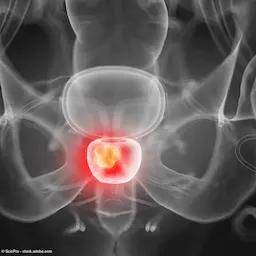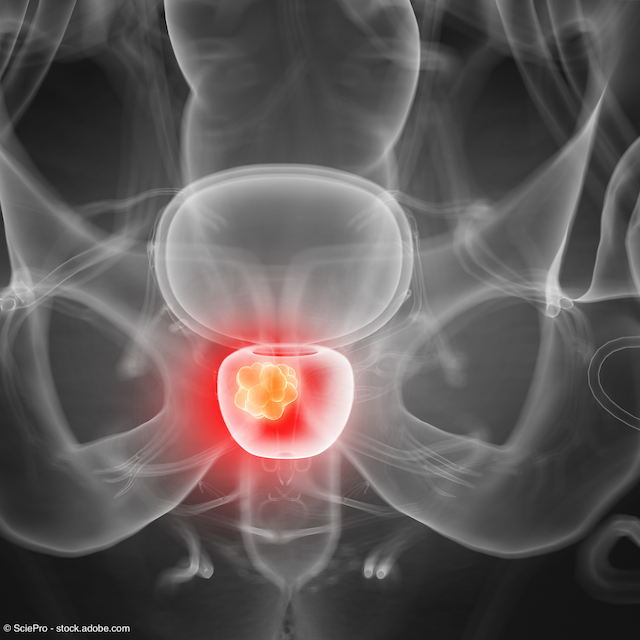Commentary
Video
Dr. Wang on the use of cutoff values for 99MTC-sestamibi SPECT/CT in kidney cancer
Author(s):
“The negative predictive value we want to be high, and the false positive rate we want to be low. None of those beat the radiologist reads in both of those categories,” says Robert S. Wang, MD.
In this video, Robert S. Wang, MD, shares the background and key findings from the study, “Limited Utility of Quantitative Thresholds on 99MTC-Sestamibi SPECT/CT for Distinguishing Renal Cell Carcinoma from Oncocytic Renal Masses,” which was presented at the 2024 American Urological Association Annual Meeting in San Antonio, Texas. Wang is a second-year SUO fellow at Fox Chase Cancer Center in Philadelphia, Pennsylvania.
Video Transcript:
99mTc-sestamibi scans are one such kind of markers that go on to a certain part of the cell called the mitochondria. Certain benign tumors and low malignancy tumors called oncocytomas and hybrid oncocytoma chromophobe tumors, they have a lot of mitochondria in them. Whereas the most common type of kidney cancer is clear cell, and also, I think, papillary kidney cancer, they do not have a lot of mitochondria. The idea is that you use this marker, you inject it into someone's veins, it goes into the tumor, and attaches to the tumor a lot. It's radioactive, so you could see how much it attaches to the tumor. If it attaches a lot to the tumor and not a lot to the surrounding kidney, that suggests the tumor has a lot of mitochondria, and therefore that would hint that the tumor is more likely to be benign.
There was a recently published meta-analysis of about 8 papers, looking at how good that scan is, and the data came out very positive. It's really sensitive and specific and has a really good positive predictive value, or a negative predictive value, in identifying these tumors. But all of these studies were done in a situation where the scan wasn't actually used to make the clinical decision. They got the scan, but they didn't really factor the scan in. These patients usually got a biopsy or surgery to begin with. This is a controlled setting to get those results. It shows that the test is very good, but we wanted to see at Fox Chase, what if we integrated this test into actual clinical practice? Does it really help us make important decisions? Is it reliable enough to hang our hat on and not do the usual workup of biopsy or just cutting the tumor out? So, my predecessor, Dr. Jared Shover, who was a fellow before me; he's at Nebraska now. At Fox Chase, a couple of the providers started to include using the 99mTc-sestamibi scans in their decision making. Sometimes the 99mTc-sestamibi suggested things didn't need surgery, and combined with other clinical data, they actually didn't get surgery or didn't get a biopsy. We don't know what the actual tumor was in those cases, we just assume it's not cancerous. And then in some cases, the scan was concerning, so they went ahead and got the biopsy or got surgery. Or the scan was not concerning, but other factors were concerning, and they went ahead and got surgery or biopsy. This is more what we call it real-world or actual practice data.
We looked at it and whenever you take something from a controlled setting to a less control setting, things don't necessarily look as good. Especially the negative predictive value. So, basically, if the test said that this was most likely benign, and then they went to surgery or biopsy, about 20% of the time it actually was cancerous. So, we say, "Oh, well, that's, that's a little bit rough."
The abstract that we're presenting is just a follow-up to that paper, basically looking at different ways of interpreting the scans. In Dr. Shover's paper, the scans were read by trained radiologists; they looked at it and said, "I think this says this is a hot scan. I think this is a cold scan." However, a lot of the other prior research for the paper used what we call quantitative cutoffs. So, they actually looked at how bright the tumor lit up and then how bright the kidney near it lit up and calculated a ratio. That's a little bit more of an objective measure. And different studies use different ratios to say whether it's a hot scan or a cold scan. We took all these ratios that previous studies in other datasets had calculated and applied them back to the dataset that Dr. Shover did his study in to see if overall, we could improve the scans ability to differentiate benign and cancerous tumors.
Ultimately, no 1 cutoff did better than the radiologists. Some cut offs have a better chance of saying if we're going to call it cancer, it's most likely cancerous. But then, by shifting the needle, it also misses. It creates an error in the other direction, where basically the false positive rate goes up. So, it tends to say, "Oh, this is benign, or it's actually not." The tradeoff was such that no single test outperformed the radiologist in both of the situations that we're looking at: the negative predictive value and the false positive rate. The negative predictive value we want to be high, and the false positive rate we want to be low. None of those beat the radiologist reads in both of those categories. We ultimately said, using these quantitative cutoffs is maybe helpful to help radiologists interpret the scan, but they don't really beat an expert radiologist's read, which is, in some ways, what we'd expect. A simple number, a simple cutoff really can't beat professional training. So, we had 2 conclusions in the study. One being what we just said. But the other is that in order for these types of scans to be more broadly incorporated into practice, we need to train radiologists to make sure they are capable of reading these scans and have some expertise.
This transcription has been edited for clarity.















